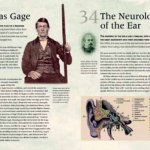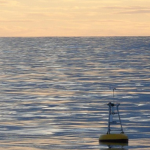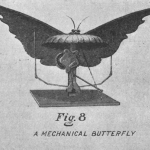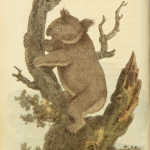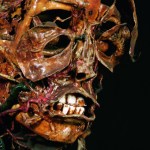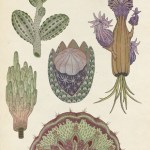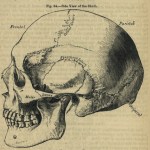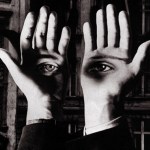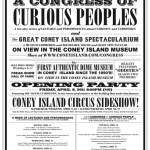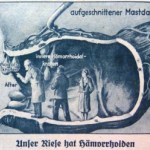history of science
In 1817, Karl August Weinhold had a go at a real-life Frankenstein's monster -- only in his version he uses a cat. The German scooped out the brain and spinal cord of a recently dead cat. He then pured a molten mixture of zinc and silver into the skull and spinal cavity. He was attempting to make the two metals work like an electric pile, or battery, inside the unfortunate cate, replacing the electrical of the nerves. Weinhold reported that the cat was revived momentarily by the currents and stood up and stretched in a rather robotic fashion!
It's Alive!!!!
Weinhold's reanimated cat was…
The Road to Paris is a web site created by the ICSU, "...a non-governmental organization representing a global membership that includes both national scientific bodies (121 National Members representing 141 countries) and International Scientific Unions (30 Members)," founded in 1931. If the ICSU had not existed when the UN was formed, the UN would have formed it. Think of the ICSU as the UN of Science. More or less.
(Follow Road to Paris on Twitter.)
Anyway, Road to Paris refers to the 2015 international meetings on climate change, and the purpose of the web site is to provide excellent…
Here are some more unsung heroes of research: scanners (the human kind). In the 1950s, Donald Glaser invented the bubble chamber – a way to track infinitesimally small quantum particles as they winked in and out of existence. The idea – which may or may not have been tested in beer – was to create a large chamber of liquid under pressure next to a particle accelerator. As the beams hit their target, producing sprays of new types of short-lived particles, these energetic particles would leave tracks of bubbles in the liquid (usually hydrogen). Everything was caught on arrays of special high-…
Check out this great slideshow of fascinating advertising novelties from 1911, over at Scientific American.
Photo of Vermont highway courtesy of Kyle Cornell
Last week, I had my long-awaited vacation semi-ruined when, thanks to Hurricane Irene, my flight back from the West Coast was cancelled. I had to rent a car and drive across the country in a rush - not my favorite way to spend three and a half days. But based on what I saw passing through New York, and what I've heard about the damage in Vermont, I can't complain: flooding has overturned homes, isolated entire towns, and destroyed everything some families own.
Vermonters are a notoriously self-sufficient bunch, and I haven't seen that much…
Gold Cortex
16 x 20, 2010
Greg Dunn
I used to have a beautiful gold Japanese folding screen, which was purchased by my great-grandmother's feisty sister on a trip in the 1920s. I loved the gold patina and the surprisingly modern impact it had on my wall. At the moment, it's loaned to a friend, but looking at Greg Dunn's artwork, I couldn't help but be reminded of the best aspects of my screen: the gold leaf, crisp black patterns, and way that the scene seemed half natural, half abstract.
The biggest twist Greg, a 6th year graduate student in neuroscience at the University of Pennsylvania,…
From 1810-11, architect and amateur naturalist George Perry published The Arcana, a lavishly illustrated, serial natural history magazine. Although Perry intended for the serial issues to be assembled by his subscribers into a book, only thirteen complete copies are known to survive today. More than a third of the known copies are in Australia - perhaps fittingly, as Perry was the first to publish an illustration of the koala (above).
Perry's work is not well known; in researching this post, all I could find online were auction listings and occasional references to a recent facsimile…
This 1967 IBM propaganda film, "Paperwork Explosion," couples an eerily deadpan refrain of "more time on paperwork," with a creepy pseudo-country neighbor* urging us to embrace Progress.
The film's frenetic soundtrack and abrupt transitions embody the familiar hysterical nervousness of an increasingly automated era, while striving the whole time to convince us that technology will relieve the pressures of the modern workplace, allowing us to "think" instead of "work". Looking back, of course, it's clear that technology instead cranked the pressure up. If writers like Nicholas Carr are to be…
. . . they could have. Or pretty darn close, at least - they just needed to visit one of the many European cabinets of anatomical curiosities, to see the work of anatomists like Honore Fragonard.
Fragonard's eighteenth-century ecorches were the clear precursors to Gunther von Hagens' "Body Worlds" exhibits: preserved, injected, partially dissected bodies in lifelike, dramatic poses, with ragged strips of muscle draped like primitive clothing over exposed vessels and nerves. The effect is eerie - like a Vesalius illustration sprung to (half-)life:
Man with a Mandible
Several of Fragonard's…
minouette of magpie & whiskeyjack has posted an interesting meditation on the resemblances between Katie Scott's whimsical faux-botanical/biological atlas pages (above), the illustrations of Ernst Haeckel (whose portrait minouette just finished), and the Codex Seraphinianous. It's a harmonious grouping of artistic influences - check it out.
Anatomical engraving from Henry Gray's Anatomy, 1858.
A month or so ago, Abrams books reached out to mention that they were releasing a new title, Human Anatomy: A Visual History from the Renaissance to the Digital Age. I said, "don't I already have this book?" It turns out I did - I had the previous, hardback edition which I picked up for $25 or so on Amazon (a deal, I thought at the time). So I knew this book should really be subtitled "vintage eye candy from Vesalius to Schmiedel," because it's a bundle of rich images from anatomical atlases, interspersed with just enough curation to give…
At the moment, a few blocks away, a few of my friends are attending a Science and Technology Studies (STS) conference at the Harvard Kennedy School. I have no idea what they're doing, although I'm sure it's very smart. I'm only here to tell you they have THE CREEPIEST POSTER I have ever seen for an academic conference:
I'm just saying, STS is definitely humanities, not science. (Now I have to run away before my boyfriend retaliates). When did you last attend a scientific conference with a vintage, artsy, creepy poster by the last surviving member of the Bauhaus? Nice work, Alex Wellerstein.…
Wait - did Peter Nowogrodski just shoehorn everything I love into one meandering, indulgent multimedia essay??*
Tolkien's Shire appears as a coherent ecosystem, cradled by productive fields and populated by abundant orchards, caches of edible mushroom, and even the fishable Bywater Pool, ornamented with an authentic churning mill. The land at Hobbiton is changing still: Jackson's crowning oak tree now sits in sun-scarred pieces behind a rotten wooden fence at the termination of Bagshot Row, a home for the welcome swallows that course through air above. In the pastures opposite Bag End, a…
The 2011 Congress of Curious Peoples, featuring, among other guests, Anna Maerker, author of Model Experts: Wax Anatomies and Enlightenment in Florence and Vienna, 1775-1815; Mike Sappol, author of A Traffic of Dead Bodies: Anatomy and Embodied Social Identity in Nineteenth-Century America; Elizabeth Stephens, author of Anatomy as Spectacle: Public Exhibitions of the Body from 1700 to the Present; and John Troyer, author of Technologies of the Human Corpse (forthcoming). Whoa.
Learn more here!
Dark pictures, thrones, the stones that pilgrims kiss,
poems that take a thousand years to die
but ape the immortality of this
red label on a little butterfly.
- excerpt from Vladimir Nabokov's "On Discovering a Butterfly"
It's not very well known that novelist Vladimir Nabokov, author of Lolita, was also a lepidopterist; for six years, he was a Research Fellow at the Harvard Museum of Comparative Zoology (now part of the HMNH). Carl Zimmer recounts in the NYT how Harvard professor Naomi Pierce recently set out to test Nabokov's hypotheses about blue butterfly speciation, and discovered…
So I'm all in favor of promoting struggling artists, and that includes documentary filmmakers. But I have to say I'm a little taken aback by the aesthetic of the "Synthetic Bio" documentary project by Field Test Films (and endorsed by Carl Zimmer). They've posted a short over at Kickstarter, where they're trying to raise $30K to finish the film in time for Sundance. But as one of my biologist friends pointed out, the soundtrack they use for the sample short (on producing spider silk in goat's milk) is eerie, mad-scientist stuff, complete with a Exorcist-like choir at the end.
I'm posting the…
Observatory is hosting another great event tonight:
From Heumann Heilmittel, "Eine Reise durch den menschlichen Körper" (1941)
Body Voyaging: an illustrated lecture with Kristen Ann Ehrenberger
Date: TONIGHT, Monday, January 17th
Time: 8:00 PM
Admission: $5
Presented by Morbid Anatomy
We human beings have a seemingly insatiable desire to experience the bodies underneath our skins. While many scholars have treated the subject of looking into or through bodies via medical imaging, one perhaps understudied trope is that of "body voyaging." A few writers and artists have imagined what it…
The physics book generating the most bloggy buzz in the latter part of 2010 would have to be Ian Sample's Massive: The Missing Particle that Sparked the Greatest Hunt in Science, about the as yet undetected particle known as the Higgs boson. Detecting the Hiigs is the most immediate goal of the Large Hadron Collider, so it's a topic that's in the air at the moment, so this book was inevitable-- in fact, the publisher sent me not one but two review copies. I gave one away, but that makes me feel even more guilty for taking months to get around to reviewing it.
This is, basically, a concise…
The NYT has a great little article about Chevalier Jackson, a turn-of-the-century doctor who kept a collection of foreign objects removed from people's throats. Dr. Jackson
"preserved more than 2,000 objects that people had swallowed or inhaled: nails and bolts, miniature binoculars, a radiator key, a child's perfect-attendance pin, a medallion that says "Carry me for good luck." . . . He was so intent on assembling his collection that he once refused to return a swallowed quarter, even when its owner threatened his life."
On February 18, the Mutter Museum, which owns Jackson's collection,…
Here are some essay links I've had open as tabs in my browser for over a week, waiting to be posted. Unfortunately, I don't have time to do the extensive commentary they deserve, so I'm admitting that, and just posting them already. Enjoy.
Graphical Abstracts & Biologists as Designers
Andrew Sun discusses "graphical abstracts" at nature network:
Although they are irrelevant to the quality of the research in my opinion, graphical abstracts (GAs) are in fact increasingly appreciated nowadays. No matter you like them or not, chances are that you have to draw one in order to publish your…
